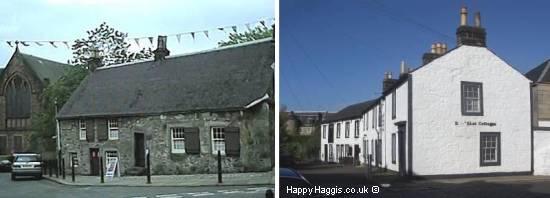HISTORY
Christian Shaw, a daughter of the Laird of Bargarran in the parish of Erskine, was responsible for bringing the thread industry to the west of Scotland. She moved to Bargarran around 1720 when widowed. It is thought, some years earlier, she had paid a visit to Holland and managed to smuggle out a twisting machine. With this she spun the linen yard and twisted a strong, white sewing thread on 12 bobbins at a time. A demand was created from English manufacturers. By far the most prosperous sid eof the textile industry in Paisley was the weaving of silk gauzes. Handloom weavers were replaced by mechanisation in the early 1800’s. Paisley silks were the most fashionable wear through all the polite circles of Europe. The original shawls came from Kashmir and were expensive to make in Britain. These shawls bore the destinctive ’pine’ motif, which formed the basis of the design now known as ‘the Paisley Pattern’
 Thread has been produced in Paisley since the early 18th century. Cotton thread was developed by James Clark, who opened a small factory at Seedhill in 1812. The Coats' factory opened in competition at Ferguslie in 1826. In 1827 there were a dozen cotton thread manufacturers and at least six had big steam-powered factories; Carlile, Clark, Kerr, Farquharson, Ross and Duncan and James Coats of Ferguslie. However, Coats and Clark took over all opposition and eventually merged in 1896 to form J & P Coats.
Thread has been produced in Paisley since the early 18th century. Cotton thread was developed by James Clark, who opened a small factory at Seedhill in 1812. The Coats' factory opened in competition at Ferguslie in 1826. In 1827 there were a dozen cotton thread manufacturers and at least six had big steam-powered factories; Carlile, Clark, Kerr, Farquharson, Ross and Duncan and James Coats of Ferguslie. However, Coats and Clark took over all opposition and eventually merged in 1896 to form J & P Coats.
Paisley’s prosperity before the mid-19th century was caused by the dramatic increase in manufacturing, which in turn was made possible by the influx of migrants into the town. Highlanders moved into Paisley in high numbers between 1770 and 1780. This flow grew heavier in years of famine, and one of the most serious famines occurred in the Highlands in 1795. Proof of the large numbers of Gaelic-speaking Highlanders in the town is in the presence of a Gaelic Chapel founded on Oakshaw Hill in 1793 and the establishment of a Gaelic-speaking mission in 1837. Most incomers seem to have come from Argyll and the Isles . The heaviest wave was of Irish immigration, which took place after the great famine of 1847-48.
ADDITIONAL INFORMATION
History of Paisley textile mills and social history
Scottish Textile Heritage Online - Weaving in Scotland.
Weaver's Cottage, Kilbarchan - protected by The national trust for Scotland. Built 1723 and the last of 800 handlooms once working in the village of Kilbarchan. Now a weaving museum.
Sma' Shot Cottages - a Weavers Cottage now a museum of Paisley's weaving heritage.


HappyHaggis.co.uk ©